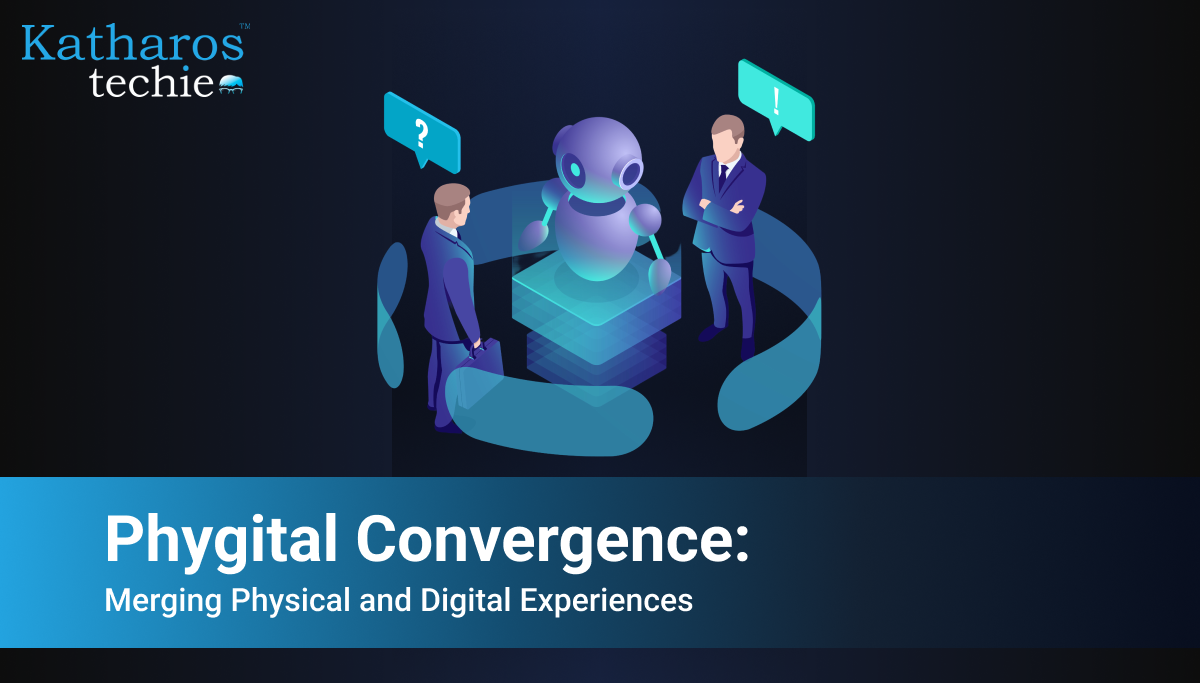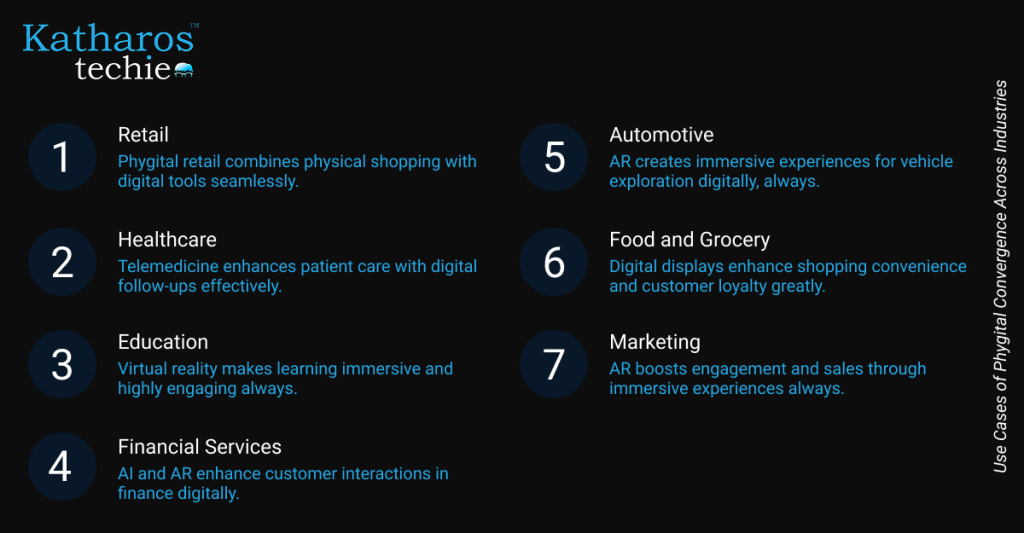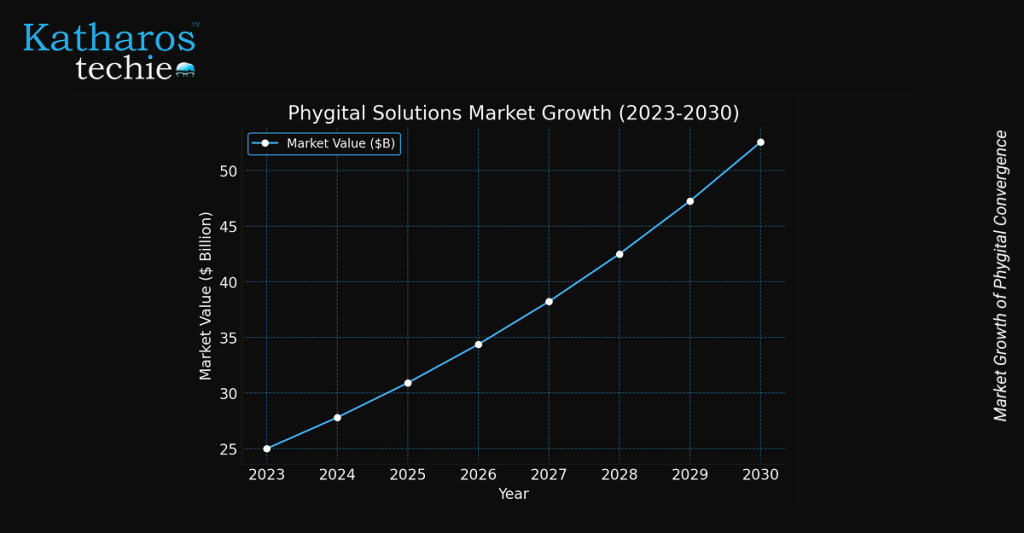
Phygital Convergence: Merging Physical and Digital Experiences
By Ankita Das

The concept of phygital convergence has emerged to create personalized interactions by integrating physical and digital experiences. This technology revolutionized industries by leveraging AR, VR, and IoT to offer enhanced user experiences and operational efficiencies. Studies indicate that 70% of consumers prefer mixing online and offline shopping experiences. This shift underscores the importance of phygital convergence in modern business strategies. In this blog we’ll explore the intricacies of phygital convergence, delving into its origins, significance, and applications across various sectors.
Understanding Phygital Convergence and Its Significance
Phygital convergence integrates physical and digital elements to create cohesive experiences. It originated from the need to bridge the gap between online and offline interactions, leveraging technologies like AR and VR. This convergence is essential for businesses seeking to enhance customer engagement and loyalty. For instance, smart retail stores use interactive kiosks and smart mirrors to provide personalized shopping experiences.
Phygital convergence helps businesses by offering omnichannel experiences, ensuring consistency across all customer touchpoints. It facilitates data integration, allowing companies to tailor offerings based on user behavior insights. In marketing, phygital strategies involve campaigns that merge physical and digital elements to enhance product interactions. This approach enhances engagement and increases sales by creating immersive experiences that connect with consumers.
Moreover, phygital convergence extends beyond retail, impacting sectors like healthcare and education. Telemedicine, for example, combines in-person consultations with digital follow-ups, illustrating how phygital strategies can enhance service delivery. Overall, phygital convergence is a powerful tool for businesses aiming to create memorable and personalized experiences.
Use Cases of Phygital Convergence Across Industries

Phygital convergence transformed various sectors by integrating physical and digital elements to enhance user experiences. Here are some industries that leverage phygital convergence for customer retention:
1. Retail
In retail, phygital convergence is evident in smart stores that combine physical shopping with digital tools like AR/VR, digital kiosks, and self-checkouts. For instance, Amazon Fresh uses sensors to automatically scan items as customers pick them up, adding them to a digital cart, thus eliminating checkout lines. Nike by Melrose offers personalized shopping experiences by updating merchandise based on local online purchasing trends. Sephora’s Virtual Artist App uses AR to let customers virtually try on makeup, enriching their in-store experience.
2. Healthcare
Healthcare benefits from phygital convergence through telemedicine services that combine in-person consultations with digital follow-ups. This approach enhances patient convenience and personalized care by leveraging digital data for better diagnosis and treatment plans.
3. Education
Education is enriched by phygital convergence through virtual reality expeditions and interactive digital content in classrooms. This makes learning more immersive and engaging, allowing students to explore distant lands and historical epochs virtually.
4. Financial Services
In financial services, phygital experiences leverage AI, biometric authentication, and AR to enhance customer interactions. Banks use virtual kiosks and geolocation-triggered messages to provide seamless services, improving customer engagement and satisfaction.
5. Automotive
The automotive industry adopts phygital strategies to create immersive experiences. Dealerships use AR to allow customers to explore vehicle features digitally before purchasing, enhancing customer engagement and streamlining the buying process.
6. Food and Grocery
In the food and grocery sector, phygital convergence enables smarter shopping experiences. Stores use digital displays and mobile apps to offer personalized promotions and streamline checkout processes, enhancing customer convenience and loyalty.
7. Marketing
Phygital strategies in marketing involve campaigns that seamlessly merge physical and digital elements, such as using AR to enhance product interactions. This approach boosts engagement and drives sales by creating immersive experiences that resonate with consumers.
As phygital convergence continues to reshape industries, it is clear that its impact will only grow more profound. With technologies like AR, VR, and IoT at the forefront, businesses are poised to deliver even more innovative and personalized experiences. We will explore these future trends and their potential impact on various sectors.
Market Growth and Future Trends of Phygital Convergence

The Phygital Solutions Market was valued at approximately $25 billion in 2023 and is projected to grow at a CAGR of 11.2% from 2024 to 2030. The market is expected to reach $52.5 billion by 2030. Major players like Microsoft and Amazon drive this growth by investing over $160 billion in AR, 3D technologies, and IoT. Additionally, consumer preferences for seamless physical and digital interactions propel this trend.
Future trends of this technology include the increased use of digital twins in manufacturing for enhanced real-time monitoring and optimization processes. Similarly, the proliferation of remote monitoring solutions and wearable devices in healthcare will significantly enhance patient care and outcomes. The automotive sector is also expected to actively integrate smart traffic systems to enhance transportation infrastructure and efficiency.
However, phygital convergence poses significant challenges related to data privacy and security. As it integrates vast amounts of personal data across physical and digital platforms, there is a heightened risk of data breaches and misuse. Addressing these concerns through robust security measures and transparent data-handling practices is crucial for sustainable growth and consumer trust.
Final Thoughts
Phygital convergence is transforming industries by integrating physical and digital experiences. The technology offers numerous benefits such as enhanced customer experiences, increased operational efficiency, and competitive advantage. To capitalize on this trend, businesses should explore phygital strategies and invest in emerging AR, VR, and IoT technologies. Start integrating phygital solutions today to enhance customer engagement and stay competitive. Contact us to learn more about implementing emerging technologies in your business and discover how they can drive growth and innovation.